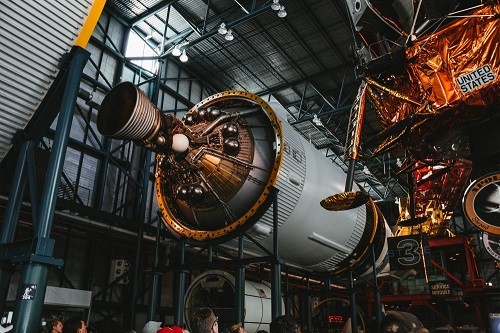As the aerospace industry continues to evolve, Aerospace 3D printing TCT Asia stands at the forefront of innovation, offering solutions that significantly enhance manufacturing processes. The integration of additive manufacturing technologies in aerospace not only streamlines production but also opens the door to new possibilities in design and material efficiency. One notable example is Stratasys’s F3300 FDM machine, launched at last year’s Formnext, which represents a significant advancement in print speed and performance.

Aircraft
Component Manufacturing
One of the most impactful applications of 3D printing in aerospace is in the manufacturing of aircraft components. Traditional manufacturing methods often struggle with the intricate designs required for modern aircraft, especially when it comes to weight reduction and strength enhancement. Aerospace 3D printing TCT Asia enables manufacturers to create complex geometries that are not only lightweight but also incredibly strong. This capability is essential for meeting stringent regulatory requirements and performance specifications in the aerospace sector.
3D printing allows engineers to design parts that minimize material usage while maximizing structural integrity. This leads to lighter aircraft, which translates into better fuel efficiency and reduced operational costs. The F3300 FDM machine is designed to cater to this need, providing a ‘step change’ in print speed that allows manufacturers to produce components more rapidly and efficiently than ever before.
Prototyping and Testing
In addition to component manufacturing, Architectural 3D printing TCT Asia plays a crucial role in the prototyping and testing phases of aerospace projects. Rapid prototyping using 3D printing allows engineers to iterate designs quickly, enabling faster testing and validation of concepts. This agility is vital in an industry where timelines are tight, and innovation is paramount.
The ability to produce functional prototypes that closely mimic the final product's characteristics is a game-changer. It allows for more comprehensive testing of aerodynamics, structural integrity, and other critical factors before moving into full-scale production. As a result, companies can identify and rectify design flaws early in the development process, saving time and resources.
Customization and On-Demand Production
Another significant advantage of Aerospace 3D printing TCT Asia is the ability to customize parts for specific applications. This flexibility is particularly beneficial for small production runs or specialized components that may not justify the costs associated with traditional manufacturing methods.
For example, custom brackets, housings, or even interior components can be produced on-demand, reducing inventory costs and lead times. This capability enables aerospace companies to respond more effectively to changing market demands and specific customer requirements.
The Role of TCT Asia
Events like TCT Asia provide a platform for industry leaders to showcase the latest advancements in 3D printing technology. With a focus on both aerospace and architectural applications, TCT Asia highlights the transformative potential of additive manufacturing across various sectors. Attendees can explore the latest innovations, such as the Stratasys F3300, and engage with experts who are pushing the boundaries of what's possible in 3D printing.
Conclusion
The applications of 3D printing in aerospace are vast and varied, from enhancing component manufacturing to facilitating rapid prototyping and customization. As technologies continue to advance, the benefits of Aerospace 3D printing TCT Asia will only grow. By participating in events like TCT Asia, industry professionals can stay at the forefront of these developments, ensuring they are well-equipped to leverage the full potential of 3D printing in their operations.
As the aerospace sector embraces these innovations, the future looks promising, with 3D printing poised to redefine manufacturing processes and outcomes in the industry.